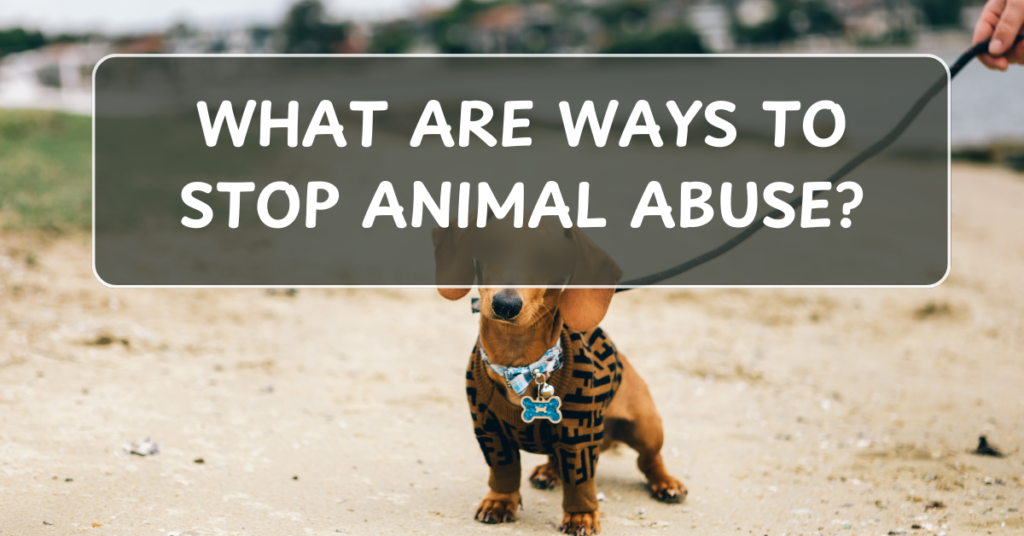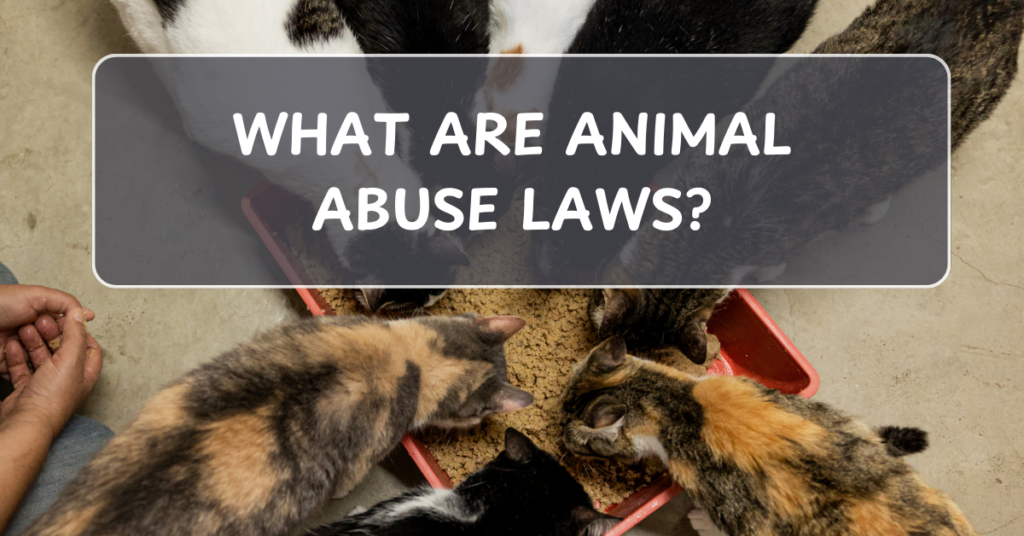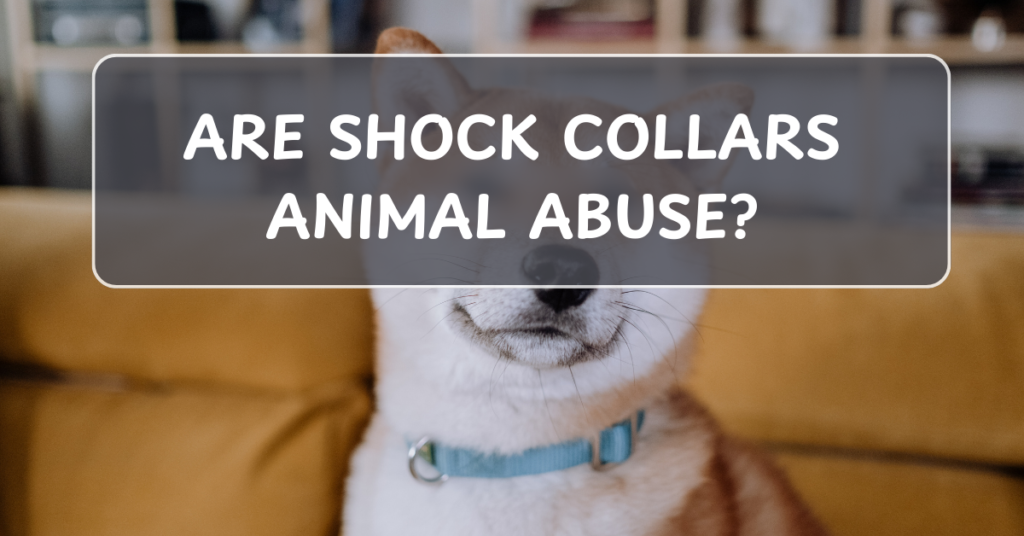
Animal abuse is a serious issue that can have devastating consequences for both animals and society. To effectively stop animal abuse, a combination of legal, societal, educational, and individual actions are needed. Here are several ways we can help prevent and stop animal abuse:
1. Strengthen Animal Protection Laws
a. Enforce Stronger Legal Penalties
Many regions already have laws protecting animals, but in some cases, the penalties for abuse are not severe enough to deter offenders. Strengthening these laws and ensuring that abusers are held accountable through stricter penalties—such as longer jail sentences, higher fines, and permanent bans on animal ownership—can serve as a deterrent to potential abusers.
b. Close Legal Loopholes
Some laws may allow certain forms of animal abuse to go unpunished, such as neglect or hoarding. Closing these loopholes and making sure that all forms of abuse—physical, emotional, and neglect—are prosecuted is key to combating the problem.
c. Improve Reporting Systems
Creating clear and accessible channels for reporting animal abuse is essential. Animal cruelty should be treated with the same urgency as other forms of abuse, with clear instructions for the public to report incidents to local authorities or animal welfare organizations.
2. Raise Public Awareness
a. Educate the Public
Raising awareness about what constitutes animal abuse is vital. Many people are unaware that certain actions—like leaving an animal outside in extreme weather or failing to provide proper food and medical care—are forms of abuse. Public education campaigns can help individuals understand the signs of abuse and how to report it.
b. Support Humane Education Programs
Schools and community programs can include humane education in their curricula to teach children and young adults the importance of treating animals with kindness and respect. Early education about animal welfare can have a lasting impact on future generations.
c. Utilize Social Media and Public Campaigns
Social media platforms are powerful tools to spread information and raise awareness about animal abuse. Campaigns, videos, and articles that highlight the issue can reach a global audience, encouraging people to take action and spread awareness about the importance of animal welfare.
3. Support Animal Shelters and Rescue Organizations
a. Donate to Animal Welfare Organizations
Many animal shelters and rescue groups rely on donations and volunteers to carry out their missions. Donating money, food, medical supplies, or your time can help these organizations rescue abused animals and provide them with the care they need to recover.
b. Volunteer with Local Shelters
Volunteering at a shelter gives you an opportunity to directly support animals in need, whether it’s by helping to care for rescued animals, assisting in educational outreach, or supporting adoption events. Your presence can also help raise awareness in the community about the need to protect animals.
c. Adopt, Don’t Shop
Choosing to adopt animals from shelters rather than buying them from breeders or pet stores helps reduce the demand for mass breeding operations, some of which are associated with animal cruelty and neglect. By adopting, you provide a loving home to an animal in need.
4. Encourage Compassionate Parenting and Pet Ownership
a. Teach Kids to Be Kind to Animals
As with humane education, teaching children empathy and compassion for animals is crucial. When children learn to treat animals with respect and kindness from an early age, they are less likely to engage in abusive behavior later in life.
b. Promote Responsible Pet Ownership
Responsible pet ownership involves providing pets with proper food, medical care, shelter, and exercise. Encouraging people to take on the full responsibility of owning a pet can help prevent neglect and cruelty. Pet owners should also be educated on the need to train and socialize their pets in a positive and non-abusive manner.
c. Advocate for Sterilization and Spaying/Neutering
By spaying and neutering pets, we can reduce the number of unwanted animals and prevent the overpopulation that often leads to neglect and abuse. Many communities offer low-cost or free spay/neuter programs to help make this more accessible.
5. Increase Animal Welfare in Agriculture and Industry
a. Support Ethical Farming Practices
Many forms of animal abuse occur in the agricultural industry, where animals are often subjected to inhumane conditions, such as factory farming. Supporting ethical and sustainable farming practices—such as free-range, grass-fed, or cruelty-free certifications—can help reduce the exploitation and mistreatment of animals in the food industry.
b. Advocate for Animal Testing Alternatives
Animal testing for cosmetics and other products can involve painful and harmful procedures. Advocating for and supporting companies that do not test on animals or use alternative testing methods can help reduce the demand for animal abuse in the research and development industry.
6. Report and Intervene in Cases of Animal Abuse
a. Speak Up and Report Abuse
If you witness animal abuse, it’s crucial to speak up. Contact local animal control, the police, or an animal welfare organization to report the situation. Being a responsible bystander can make all the difference in stopping abuse and getting the animal the help it needs.
b. Educate the Abuser
In some cases, an abuser may not fully understand the harm they are causing. If it’s safe to do so, engaging in a calm and compassionate conversation about the impact of their actions on the animal can sometimes lead to change. However, this should always be done cautiously and in situations where personal safety is not at risk.
c. Support Anti-Abuse Campaigns
Participating in or donating to campaigns aimed at stopping animal cruelty can amplify efforts to change laws, educate the public, and fund the rescue and rehabilitation of abused animals.
7. Collaboration Between Law Enforcement and Animal Welfare Groups
a. Improve Training for Law Enforcement
Law enforcement officers should receive training on how to recognize signs of animal abuse and understand the appropriate legal actions to take. Collaborations between animal welfare groups and law enforcement can ensure that animal abuse cases are investigated thoroughly and justice is served.
b. Create Animal Cruelty Units
Specialized units within law enforcement agencies can be dedicated to investigating animal cruelty cases, ensuring that animals are protected and abusers are held accountable.
Conclusion
Stopping animal abuse requires a multi-faceted approach involving education, stronger laws, societal awareness, and active intervention. By supporting ethical practices, educating others, reporting abuse, and working with organizations dedicated to animal welfare, we can all play a role in preventing animal abuse and ensuring that animals are treated with the kindness and respect they deserve.


